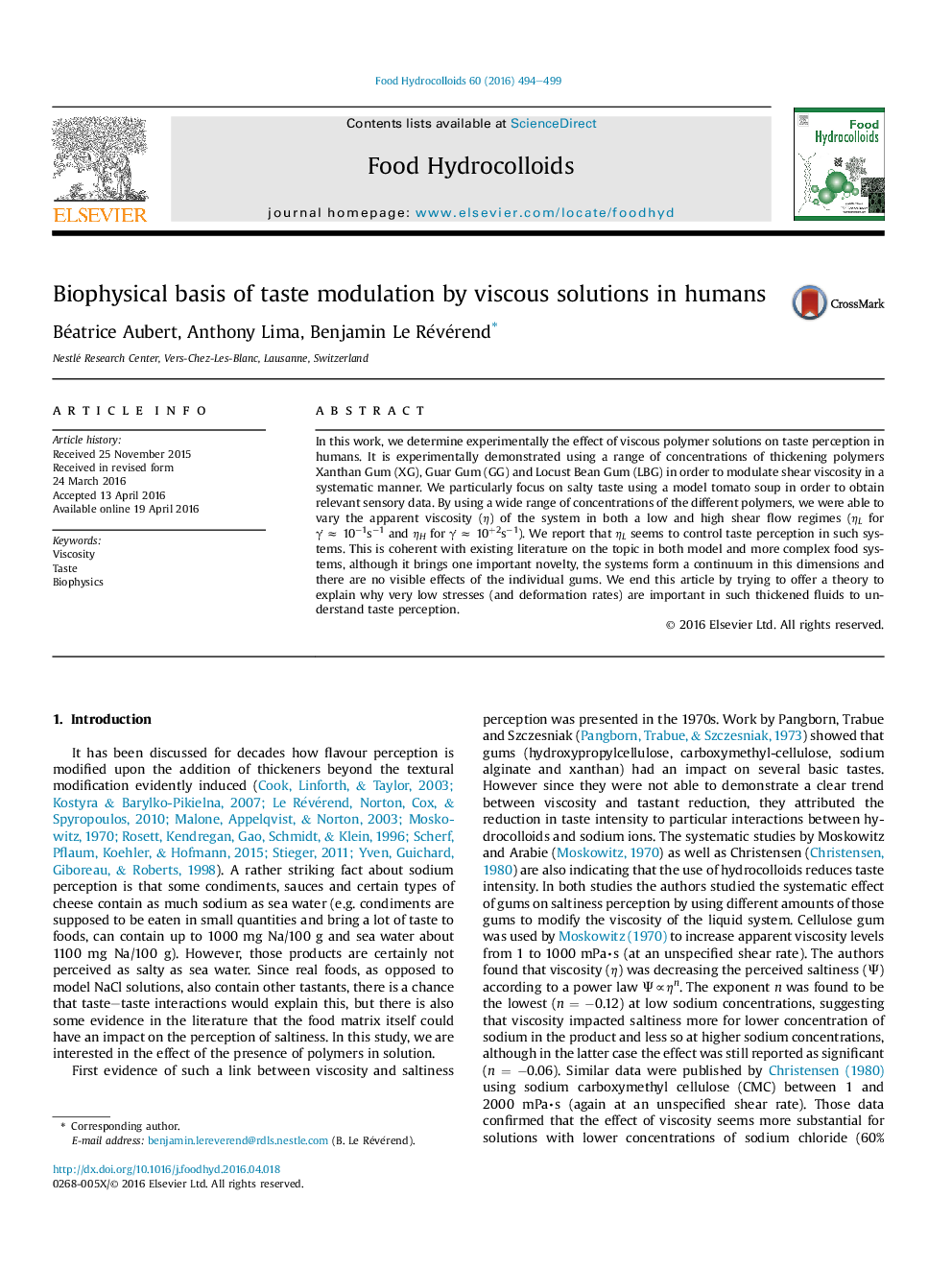| Article ID | Journal | Published Year | Pages | File Type |
|---|---|---|---|---|
| 603601 | Food Hydrocolloids | 2016 | 6 Pages |
•Viscosity rather than thickeners themselves impact saltiness perception.•Low shear viscosity is relevant to characterize the effect on taste.•Convective mass transfer theory can be used to predict those effects.•Results are valid across 5 decades of low shear viscosity.
In this work, we determine experimentally the effect of viscous polymer solutions on taste perception in humans. It is experimentally demonstrated using a range of concentrations of thickening polymers Xanthan Gum (XG), Guar Gum (GG) and Locust Bean Gum (LBG) in order to modulate shear viscosity in a systematic manner. We particularly focus on salty taste using a model tomato soup in order to obtain relevant sensory data. By using a wide range of concentrations of the different polymers, we were able to vary the apparent viscosity (η) of the system in both a low and high shear flow regimes (ηL for γ˙ ≈ 10−1s−1 and ηH for γ˙ ≈ 10+2s−1). We report that ηL seems to control taste perception in such systems. This is coherent with existing literature on the topic in both model and more complex food systems, although it brings one important novelty, the systems form a continuum in this dimensions and there are no visible effects of the individual gums. We end this article by trying to offer a theory to explain why very low stresses (and deformation rates) are important in such thickened fluids to understand taste perception.
Graphical abstractFigure optionsDownload full-size imageDownload as PowerPoint slide
